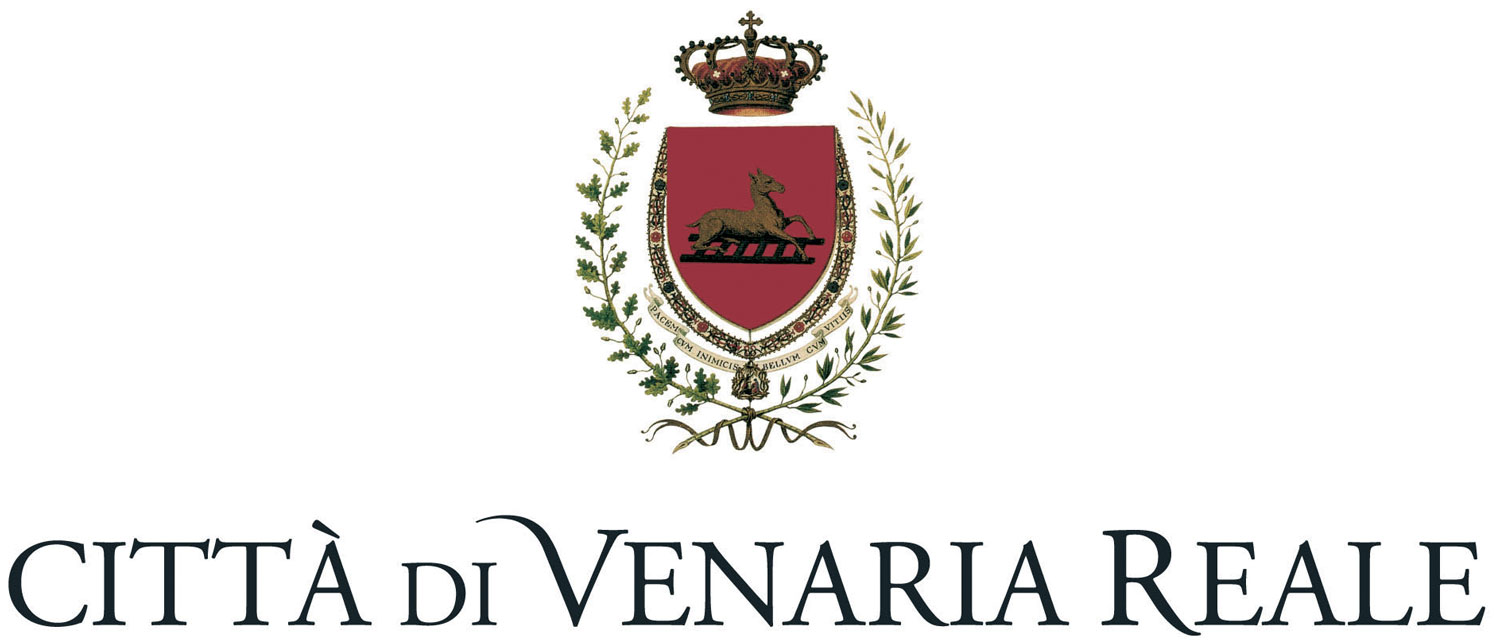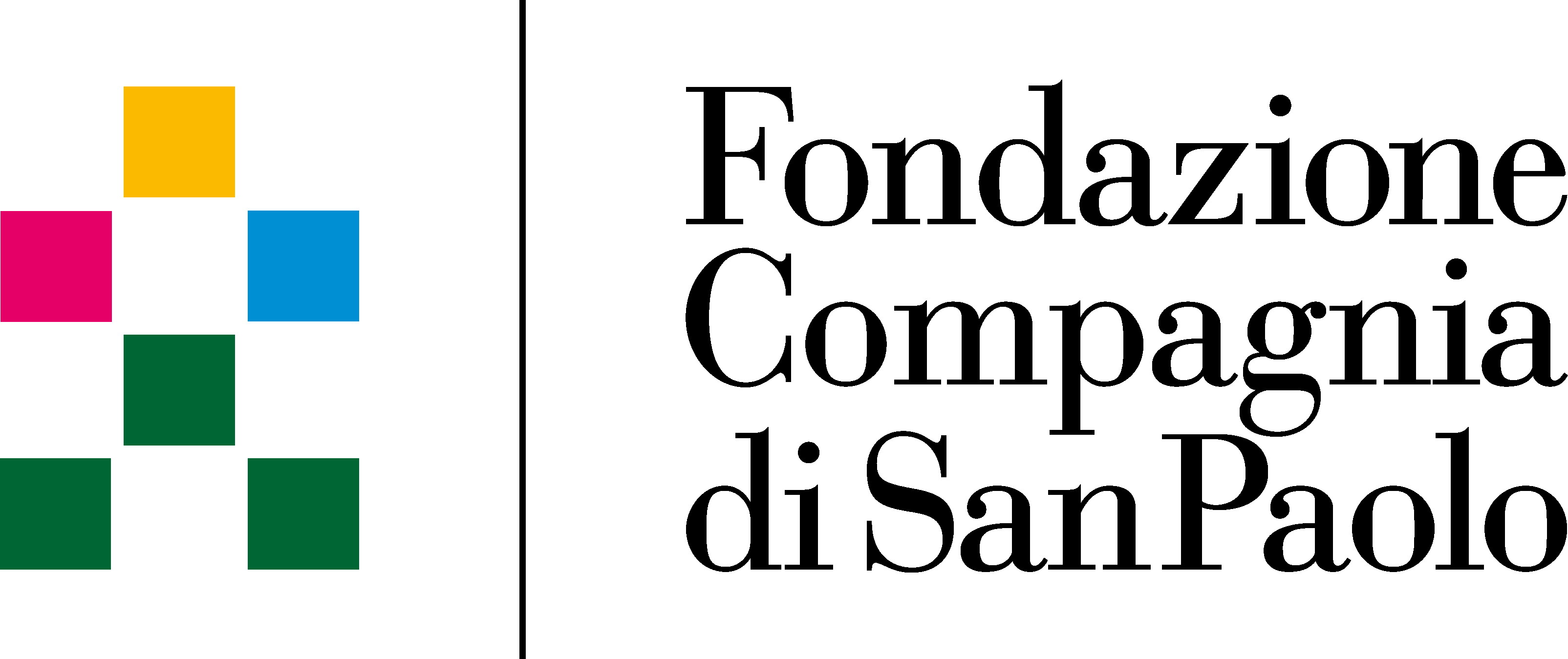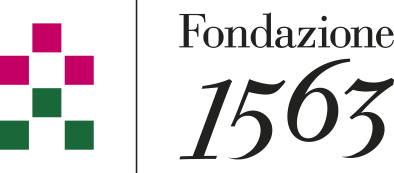Commissioned by Vittorio Amedeo II, it was constructed between 1716 and 1729. Juvarra conceived an imposing set of spaces on a Greek-cross plan, with two large altars at the ends of the transept and four chapels along the diagonal lines that are round inside, but polygonal on the outside .
The rich decorations, together with a careful use of lights and shadows, create a truly extraordinary effect.
The undisputed protagonist of the Church is the High Altar by Giovanni Baratta. It appears to be suspended, almost bathed in the light that shines in from the tabernacle supported by marble angels. The altar extends in height between the two central columns in the recess created by the apse.
The light pouring in from the vast glass windows behind further enhances the colors and the tones of the altar.
Baratta also authored the four statutes of the Doctors of the Church that are found in the central niches: Saint Augustin, Saint Ambrose, Saint Anastasius and Saint John Chrysostom.
The side altars are characterized by four large altarpieces by famous painters of the Roman school.
The architectural passages from the Church to the Reggia were not finished by Juvarra, but were completed by Benedetto Alfieri under Carlo Emanuele III. Alfieri also designed the monumental staircase leading up to the tribune of the Church.


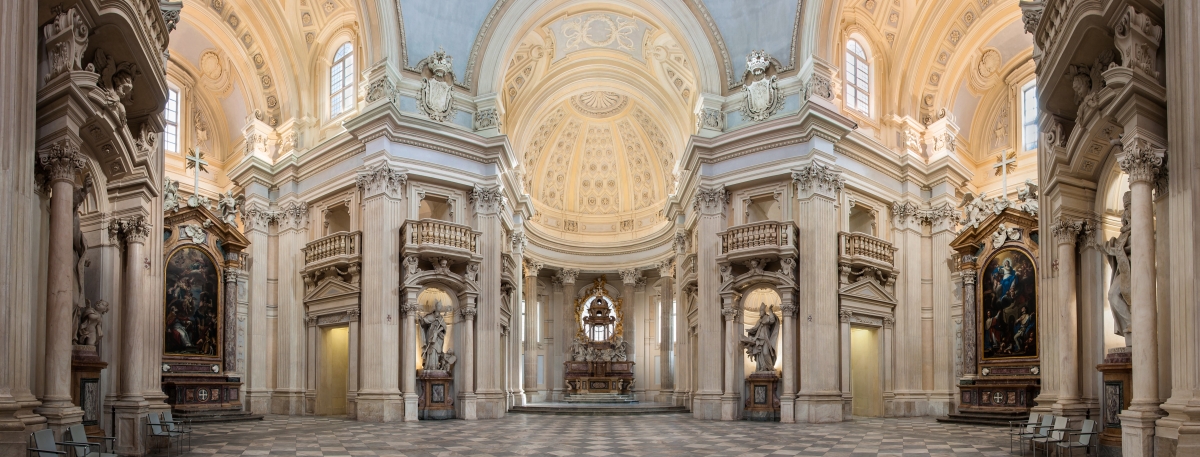
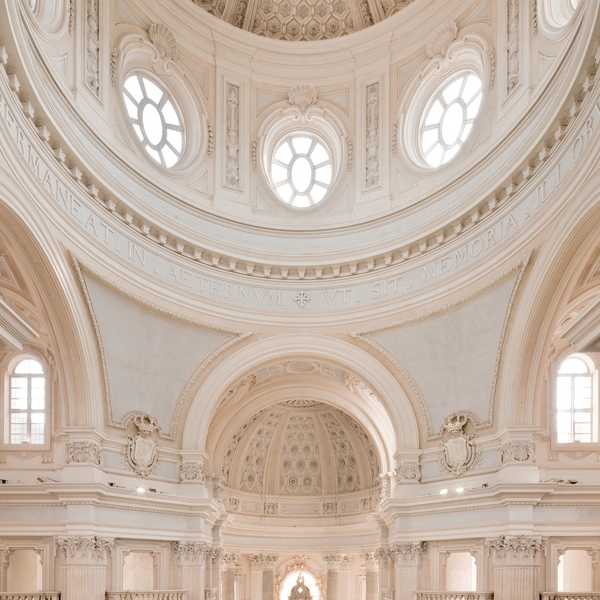
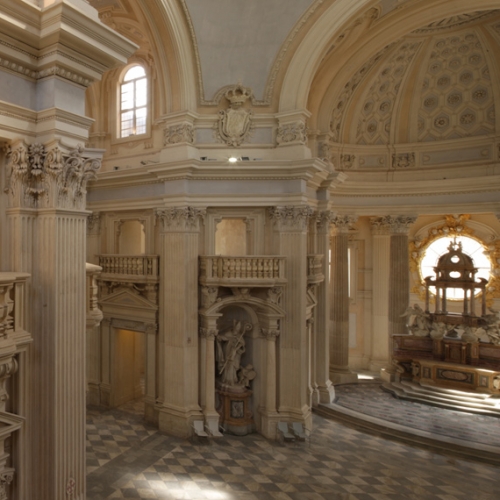
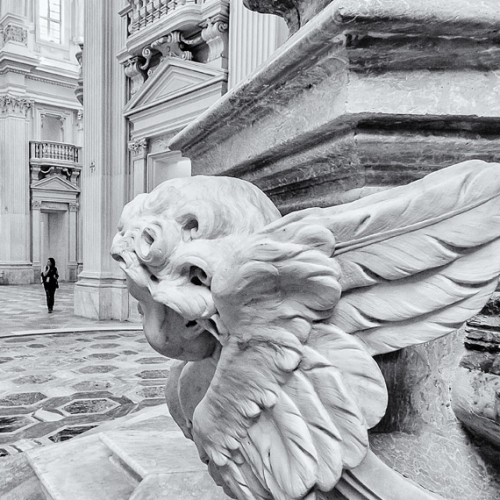


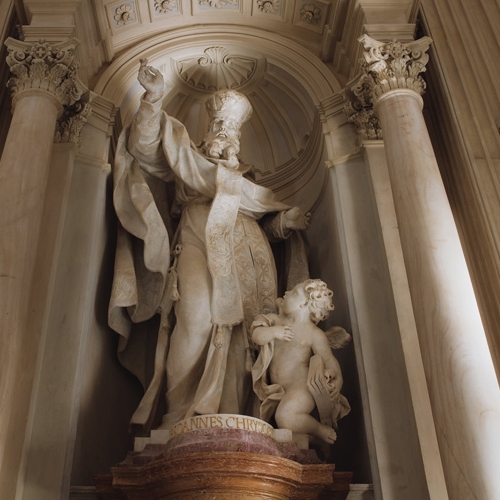
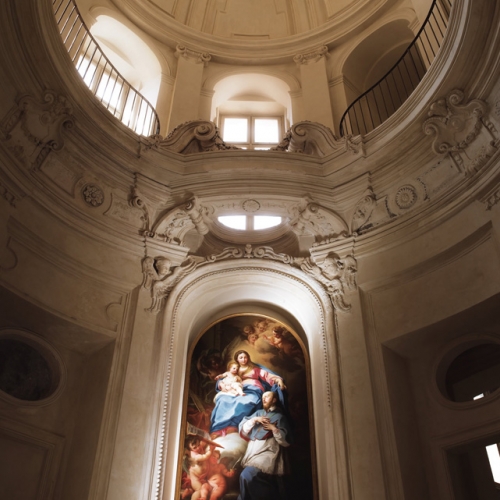

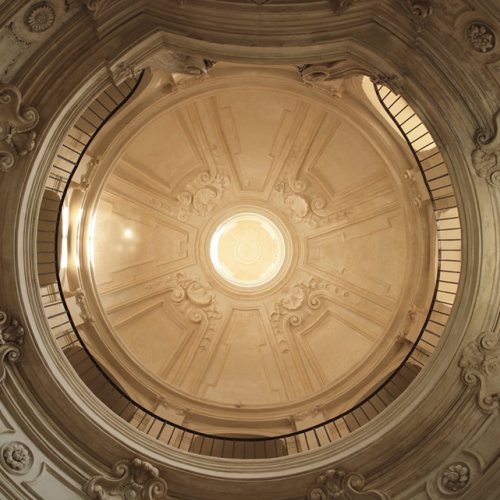

 Tickets
Tickets






